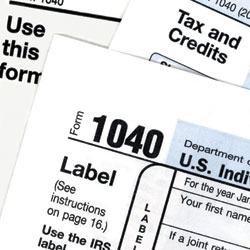
Whether or not you have a separate research and development (R&D) department, chances are your company regularly engages in R&D activities.
Creating efficiencies, enhancing product lines and introducing new goods are done to increase revenues, improve margin and combat competitive pricing pressures. To promote business innovation, federal and some state tax laws provide a tax credit against income tax liability for R&D expenditures. Many companies can claim this credit—including yours. If you claim a domestic manufacturers deduction, your company has attributes similar to those that apply for R&D credits.
In 2007, the alternative simplified credit (ASC) went into effect, and companies that were unable to claim credits under previous methodologies now potentially benefit from this new approach. In addition, other companies that claimed credits using old tactics may find ASC even more beneficial.
R&D Deduction vs. R&D Credit
The R&D deduction (IRC § 174) treats relevant costs as expenses and reduces taxable income (and, in many instances, simplifies recordkeeping), while the R&D credit (IRC § 41) reduces tax liability dollar for dollar. In certain circumstances, you can take advantage of both the deduction and the credit. This opportunity can be significantly enhanced by filing refund claims for all open tax years to generate cash. Taxpayers can amend returns up to three years after the original filing.
Don’t Overlook This Opportunity
The main advantages of the R&D tax credit include:
- Maximizing earnings per share/profitability and cash flow
- Lowering the effective tax rate
- Capturing credits that provide insights into the true costs of products.
You may benefit from the R&D tax credit if your company engages in one or more of the following activities:
- Developing new or improved products
- Developing new or improved manufacturing processes
- Increasing automation, design and fabrication of tools and dies
- Developing production equipment
- Developing new or improved software applications.
The IRS recently broadened the potential of R&D tax credit opportunities by recognizing many changes in operations and product lines that are evolutionary—rather than revolutionary—which can qualify for the credit.
Current Environment
Traditional methods of quantifying costs associated with qualifying R&D activities have come under increased IRS scrutiny. The bar has been raised on documentation necessary to meet the “more likely than not” level of assurance necessary for Financial Accounting Standards Board Interpretation (FIN) No. 48, Accounting for Uncertainty in Income Taxes, Circular 230 and IRC § 6694 preparer penalty compliance.
Previously, your tax advisor would sign your company’s tax return if he/she believed there was a realistic possibility (one in three chances) that each position taken on the tax return would withstand examination by the taxing authority. That benchmark has changed. Now, when your advisor signs your return, the required level of assurance is more likely than not (more than 50 percent) or the position must be disclosed in the tax return—otherwise the IRS can assess penalties on the taxpayer and possibly the preparer. Keep in mind that the level of assurance is different for the taxpayer versus the preparer. This change only emphasizes the need for strong communication between you and your tax advisor, especially in regard to the best strategies for enhancing your company’s overall tax position.
R&D Credit Approach
Companies should consider taking the following approach to develop and sustain credits:
Project qualification
- Identify R&D projects and initiate project numbers early.
- Establish and retain project files outlining the development process.
- Track start and commercial production dates.
- Link employees and activities to respective projects.
- Tie costs to projects.
- Develop a vendor list to track services performed and address rights and risk issues.
The rules in this area are modified regularly, so keeping abreast of revisions can be an ongoing challenge. That’s why your tax advisor must maintain contact with the U.S. Department of Treasury, the IRS, Congress, the National Association of Manufacturers and the U.S. Government Accountability Office.
These ever-changing rules provide opportunities as well. By embracing the IRS adjustments, your company can get a better look at costs, understand how many people are actually involved in projects and realize the true cost of manufacturing and development.
The current R&D tax credit expired on December 31, 2007, before federal legislation was approved to extend the credit. Congress has historically renewed the credit, having done so several times throughout the last 20 years, and the current Congress has indicated they intend to as well. It’s crucial that legislators hear from manufacturing companies about the role and significance of this tax credit and how it helps keep U.S. manufacturers competitive through innovation. IBI

